Wine: How to Buy, Taste, and Talk About It
People love wine for all sorts of reasons. Whether you want to get into a career that involves wine, want to become a winemaker, or you’re a wine enthusiast who’s curious about their favorite drink, you need to read this article. Learning everything there is to know about wine may seem like a daunting task, but we’ve got all of the info you need to take your love for wine to the next level.
Table of Contents
Know Your Wine Varieties
If you are a beginner when it comes to wine, you probably know there are different varieties of it. In fact, there are five varieties, and each one has multiple types. The five types are red, white, rosé, sparkling, and dessert wine. For example, a variety of wine is red wine, and a type of red wine is Merlot. When it comes to varieties, you’re also going to come across the term “varietal,” which refers to a wine that is made only from a singular kind of grape. Watch out for these terms, so you seem like a wine pro!
Each variety (and type) has specific flavor notes, aromas, and uses certain grapes for its production.
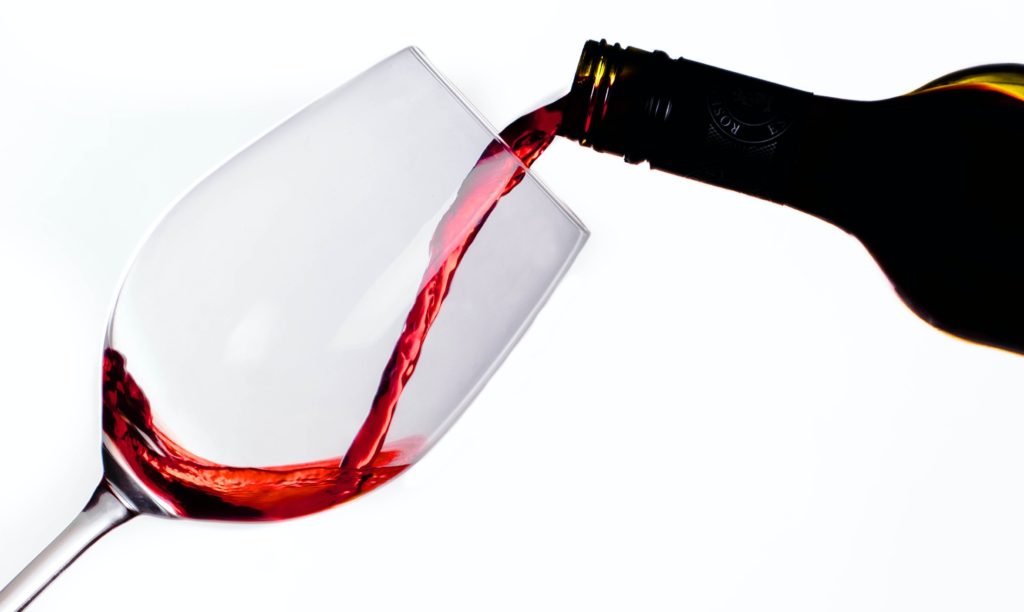
Primary Aromas
These are the first notes you will smell when you go to take a whiff of your wine. These include heavier scents such as spices, herbs, mint, pepper, licorice, citrus, and fruits. These scents are derived from the base of ingredients used in the wine, which is why they are the strongest.
Even people who are unfamiliar with wines should be able to detect these scents almost immediately. You will be able to taste these flavors more than any other flavor notes as well.
Secondary Aromas
Secondary aromas come from things that were infused into the wine during its production process. This means that what you are smelling comes from things such as fermentation and aging the wine in barrels.
Some typical scents of secondary aromas are yeast, biscuit, and butter. Depending on how long the wine is aged in oak barrels, you will also be able to pick up on notes of vanilla, clove, smoke, coconut, and sometimes coffee.
Tertiary Aromas
These scents are much more complex and harder to uncover than primary and secondary aromas. You will only be able to detect tertiary aromas if the wine was aged in optimal conditions. These aromas are also more common in much older wines.
In red wines, you may pick up scents like raisin, fig, tobacco, earth, and mushroom.
In white wines, you will be able to detect dried citrus, specifically orange and apricot. You can also pick up almonds, candied fruits, nutmeg, and ginger. You should note that most wines will not have these aromas, because the vast majority of wine is meant to be consumed while it’s young. A small percentage of wines are aged for three to ten years, and an even smaller percentage are aged for over ten years.
Red Wines
Dark-colored grape varieties are used to make red wine. These grapes range in color from purple to red to black to dark blue. Interestingly, though, there are a lot more variations in the colors of red wine than just ”red.” A young red wine might look positively violet, and while one that has been aged for a long time (and is therefore probably very expensive) will likely be a shade of brownish-red.
In some cases, red wine has been shown to improve your heart health when consumed regularly (in moderation, of course). A few types of red wine include Pinot Noir, Merlot, and Cabernet Sauvignon.
White Wines
White wine is fermented without coming into contact with grape skins. Because of this, it has a light yellow-green color. Usually, white wine has fruitier flavors than red wine and even rosé, and it will likely have a higher acidity, as well. It can be sweet or dry, and there’s a huge range when it comes to flavor.
Some popular forms of white wine include Pinot Grigio, Sauvignon Blanc, and Riesling.
Rosé, Wines
Rosé gets its pink color thanks to the fact that it has reduced contact with the grape skins used in its production—more than white wine, but less than red. The reason this happens is that the fermentation process is cut short, which results in pink coloration.
Rosé is widely believed to be the oldest type of wine in the world, and it is the simplest type to make. Usually, rosé is dry, but some versions are a bit sweeter with some hints of fruit.
Sparkling Wines
When you think of sparkling wine, the first thing that comes to mind is probably champagne, but they’re not actually the same thing. You can only refer to sparkling wine as champagne if it comes from the Champagne region of France, and it often varies in the taste and type of bubbles. Champagne also requires certain types of grapes for its production, which include Pinot Noir, Chardonnay, and Pinot Meunier.
However, France isn’t the only place that makes sparkling wine. Other popular regions include Spain, Italy, and even the United States. When you’re drinking sparkling wines, you can usually expect “bready” or “biscuity” flavors, and the size of the bubble actually affects the drinking experience.
Dessert Wines
As the name implies, dessert wines are consumed in smaller quantities, and they are served after a meal. It is usually used as a palate cleanser or paired with dessert. The portion for dessert wine is typically the size of a shot or slightly bigger.
Although you may not be super familiar with them, there are plenty of varieties of dessert wine. Varieties to look out for include fortified dessert wines, port wine, sherry, unfortified dessert wine, ice wine, and Noble Rot wine (which isn’t as weird as it sounds, we promise).
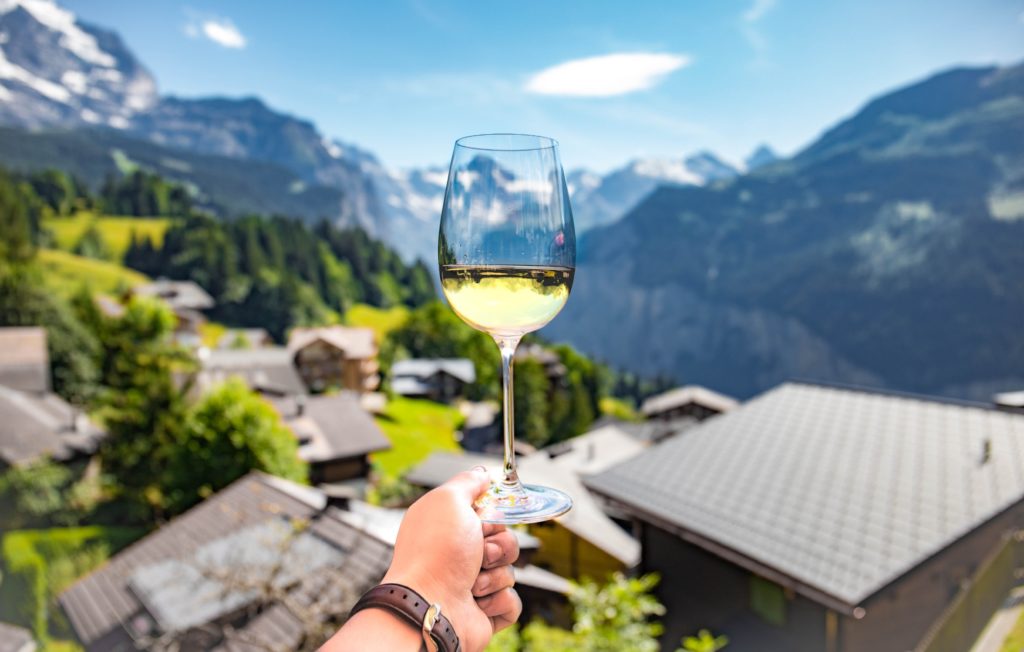
Wine Regions
Considering wine has been around for so long, it’s safe to assume that it can be made almost anywhere. There are thousands of wineries spread out across the globe in almost every country. That said, some places are known for their vineyards more so than other countries. For example, Italy, France, and California are famous for having high-quality wine.
There are amazing wineries everywhere from Chile to New Zealand, so we wanted to give you an inside peek into where you can get the best wine all around the world.
Wine in Europe
France tops our list because it is the number one producer of wine in the entire world. However, it is only slightly above Italy, which comes in a close second for production. The most well-known wine regions in France are Bordeaux, Champagne, Burgundy, Rhône, and Provence.
While France is in the lead, Italy is consistently competing for the #1 spot. Some of the best wine regions include Piedmont, Tuscany, Sicily, and Beneto. Both white and red wine are huge in this country, and Italy is the home of prosecco and the Sangiovese varietals needed to make Brunello di Montalcino.
Germany also makes the list of top European wine producers, and it is widely known for its Mosel Riesling wines, which are a specialty of the country. Its top winemaking regions include Franken, Baden, Nahe, and Pfalz.
Wrapping up the list of European countries is Spain. When you combine this country’s production with that of France and Italy, you get half of the world’s wine production. The biggest wine regions in Spain are Castilla y Leon, Rioja, Toro, and Priorat. Spain is particularly known for its red wines.
Wine in the United States
In the United States, California is known as “wine country.” This state is, by far, the best place in the U.S. for wine. Napa Valley and the city of Sonoma are two of the most well-known wine regions in the entire world, and their vintners compete at a high level with European wines.
Oregon is known across the country for its Pinot Noir wine. The best and most famous wine region in this state is the Willamette Valley.
Washington is another state that produces amazing wine. Like Oregon, Washington is known for a specific wine—Chardonnay, which people note is crisp and delicate, with notes of fresh apples.
Wine in South America
If you travel to Argentina, you will find a country that has the perfect terrain for vineyards and growing wine grapes. There are only two wine regions in this South American country, which include Mendoza and Patagonia. Argentina is known for producing the best Malbec wines in the whole world.
Wine in Australia
All the way over in the Pacific ocean, Australia t is known for producing elegant and high-quality wines from all areas of the country, which range in climate from hot and dry to wet and cold, depending on the season.
Many people describe Australian wines as eye-opening, and most of them are clean and natural. The best wine regions in Australia include Adelaide Hills, Swan Valley, and Margaret River. One of the most popular wines the country produces is Shiraz.
Wine in Africa
You might not think of Africa as a wine hub due to its deserts and plains, but South Africa makes quite a few world-renowned wines. There are actually a few different wine regions in this country. In this country, wine regions are known as Winelands. Three of the biggest Winelands include Walker Bay, Swartland, and Paarl. These regions produce both red and white wines.
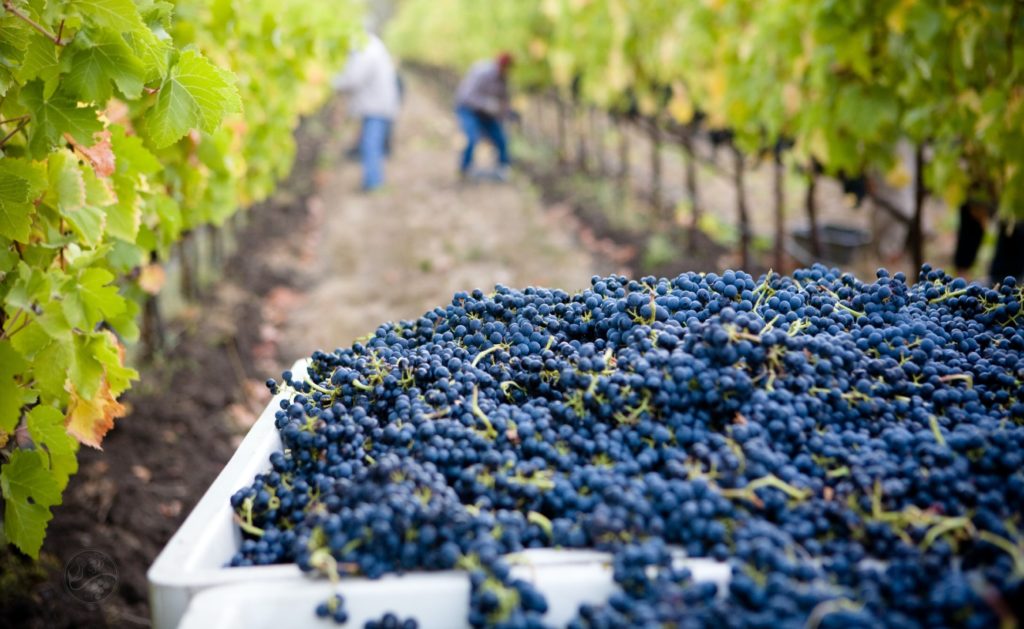
Wine Price Points
The truth is, wine price points are all over the place. It really does depend on where you buy the wine, what kind you are buying, and where it’s from. Wine prices range from insanely cheap to unbelievably expensive.
Every grape harvest is sold at a set price that cannot be adjusted, even if they yield a lower amount of wine. If a grape harvest produces a large amount of wine, those bottles will be cheaper than wine made from a smaller, limited harvest. Another way scarcity affects price, winemaking techniques that increase the quality of wine tend to cost more than techniques that increase the quantity of wine. This leads to the higher quality wines often being created in smaller quantities, making their market price much higher.
The time that it takes to age a wine can increase its price as well because of the investment in materials and storage.
One of the largest effects on wine costs, however, is where the wine is from. Certain areas are better suited to producing high-quality grapes, and their long tradition of prestige has led to widespread winemaking skills in the region. Local traditions in these regions are regulated by guidelines for preserving quality and sustaining the land, which translates into higher prices.
Some stores are well-known for selling great-tasting bottles that cost only $2. On the other end of the spectrum, you can find rare wines that cost thousands of dollars per bottle. The point is, you can find a good wine no matter what your budget is.
How To Taste Wine
Believe it or not, you aren’t supposed to just start gulping down the wine when you are served at a restaurant or when you open a bottle at home. If that’s what you do, don’t worry; you can keep doing you, and we’re not going to judge. If you want to get a little fancier, though (and maybe impress a date), there is a more “correct” way to taste wine.
Rule number one: Tasting wine requires more than just your tastebuds. It should include your other senses such as sight, smell, and even mouthfeel.
When you taste wine, there are four main things you need to do: You need to look at its color, aerate it, smell it, and take a sample sip. We know what you’re thinking: why can’t I just take a sip and dive in? You can, but trust us, it will taste so much better if you follow these steps. To truly enjoy a good glass of wine, engaging all your senses is key.
What To Look For In Good Wine
When you start diving into the world of wine, it can be easy to get bogged down by just how much is out there. That’s why we’re laying out the basics of what you need to know when choosing a good wine.
What a Wine’s Color Can Tell You
A wine’s color is the first thing you will notice about it anyways, but it really can tell you a lot of information about the wine you are about to drink. The way that wine gets its color in the first place is from the skin of the grapes that are used.
So, depending on the color, you can tell if there was any extra flavor added by the skins, especially if they soaked in there longer. This will also give you a hint about whether (and how long) the wine might have been aged. Determining this is simple—hold your glass of wine up and look at the color. Then you can see if it is lighter or darker before you first take a sip.
Of course, white grapes will tend to create white wines and red grapes tend to create red wines, but wines in either category with intense colors will have higher tannins, leading to a bolder taste palette. Similarly, the more time a winemaker keeps the grapes’ skin in contact with the juice, the darker the wine’s color will be. This is also how rose wine is created, by making a wine with red grapes but removing the skins earlier during the fermentation process. Darker colors in wine can also indicate that it was aged longer in oak during the winemaking process, which creates a bolder flavor.
Why Do You Swirl Wine?
Many people think that swirling your glass of wine is just a way to engage your sight before drinking the wine, but it actually does two things for you. First, when you swirl your wine, take a look at how it sticks to the inside of the glass—this is called your wine’s “legs.” A wine with a high alcohol content will have more droplets on the inside of the glass, and one that has a high sugar content will take a longer time to drip back into the glass. It’s subtle, but you can definitely tell a difference.
However, swirling the wine is more for your nose and sense of smell. When you swirl your wine in the glass, you help aerate it, which means it will release the aromas of the wine.
To do this, take your glass in your hand and give it a nice swirl (careful not to swirl it too hard so that it spills), and then hold the glass under your nose. Take a big inhale through your nose, which will allow you to smell all of the fragrance notes and fragrance profiles that are in the wine. After doing this, it is finally time to start sipping and enjoying your wine.
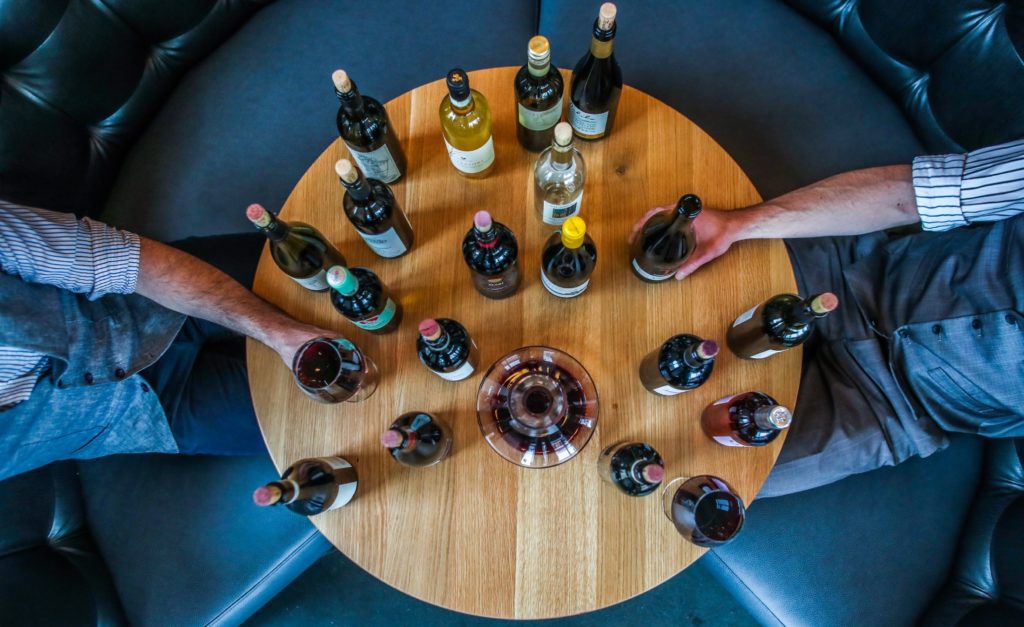
Exploring Balance and Taste
This is the part where you actually get to taste the wine in order to determine whether or not it’s “good.” After you get a good whiff of your wine, you need to have a decently sized sip in order to give it the final seal of approval. In order to determine if a wine is balanced, you should note all of the flavors and feelings in your mouth when you take that first sip. Is it extremely acidic? Sweet as sugar?
These elements will help you figure out if something is out of whack. If the wine has a nice blend of flavors, acidity, dryness, or sweetness, then it is balanced. This is not to say the wine can’t have those elements stand out, because every type of wine has a flavor profile or note that will stand out. But your job is to see if it is overpowering and overwhelming the other elements of the wine.
What Are “Wine Aromatics?”
There’s more than meets the eye (or should we say tongue?) when it comes to wine. Wine is not simply about the taste; the smell is equally as important. Our noses can help to pick up thousands of different scents, which is essential to the wine-tasting process. Our tongues, on the other hand, can only taste salty, sweet, bitter, and sour. If you really want to taste a wine, you’ll have to use your nose!
What Is Wine Body?
You may hear the word ‘body’ thrown around when sommeliers are discussing wine. When people talk about a wine’s body, they are referring to the lightness or heaviness they feel in their mouth while drinking it. People like to distinguish the body of wine in order to help properly pair it with food.
While it’s generally common knowledge that white wines pair well with white fish or chicken and reds pair with beef or heavy pasta, a wine’s body adds a whole new layer to the pairing experience. There are three ways to describe wine’s body: light body, medium body, and full body. There are some key differences between each one which will help you to determine how to pair it.
Light body wines are delicate, light, and crisp. They also contain the lowest percentage of alcohol out of any other wines. If a wine has a light body, it will pair well with chicken or turkey, seafood (especially white fish), lighter pasta dishes, and salads. Some types of wine that are known for being light-bodied include Pinot Noir, Pinot Grigio, and Sauvignon Blanc.
The biggest difference between light and medium-bodied wines is that they have more fullness when you take a sip. Medium body wines are best paired with heavy fish (like salmon), roasted chicken with heavy seasoning, and pasta dishes with red sauce or meat sauce. Some examples of medium body wine include Grenache and Cabernet Franc.
Full body wines contain the highest alcohol content and are very full in the mouth, which means you will be able to feel a bit of thickness in the wine. This type of wine can be paired with steak or rich pasta such as fettuccine. Some examples include Cabernet Sauvignon, Malbec, Merlot, and Zinfandel.
Typically, full body wines are preferred by people who are regular wine drinkers. That’s not to say you won’t like full-body wines if you are just starting to drink wine for the first time. It really does depend on your palate and whether or not you really like the taste of wine.
How To Identify Acidity and Sweetness in Wine
You need to know about acidity because it’s essential for understanding the various complex flavors that can be found in wine. Acidity is actually one of the easiest parts of wine to understand—basically, does the wine make your mouth pucker when you take a sip, like you just took a bite out of a lemon? Just like anything else that contains acid in it, the acidity of wine works on a pH scale, which helps to make things easier to understand.
Wines are very acidic. They are closer to lemons in terms of their acidity than they are to coffee. Most low acid red wines have a pH of 3.8, but the average red and white wines have a pH of 3.5. White wines that are light-bodied have a pH of 3.1, while sweet whites have a pH of 3. This means that sweet white wines have the highest level of acidity out of all wine, although the sugar usually balances it out.
Now let’s talk about identifying sweetness in wine. A wine is sweet when the fermentation process stops a little bit early, so the yeast hasn’t yet converted all the sugar into alcohol, leaving what is known as residual sugar. Most of the time, a sweet wine will have more than 10 grams of sugar, but this obviously depends on the brand and the production process.
When a wine is dry, the yeast that is added to the fermentation eats all (or most) of the sugar. For a wine to be considered dry, the fermentation process must be fully completed, which means almost all (or all) of the sugar is removed.
Since sweetness is a flavor that most of us are pretty familiar with, figuring out whether a wine is sweet or dry shouldn’t be all that difficult. The only warning is to be careful that you’re not confusing sweetness with fruitiness—you can actually have a fruity wine that’s bone dry, and a wine that tastes nothing like fruit that’s super sweet. It just takes a bit of practice to sort it out—more on that coming up right now.
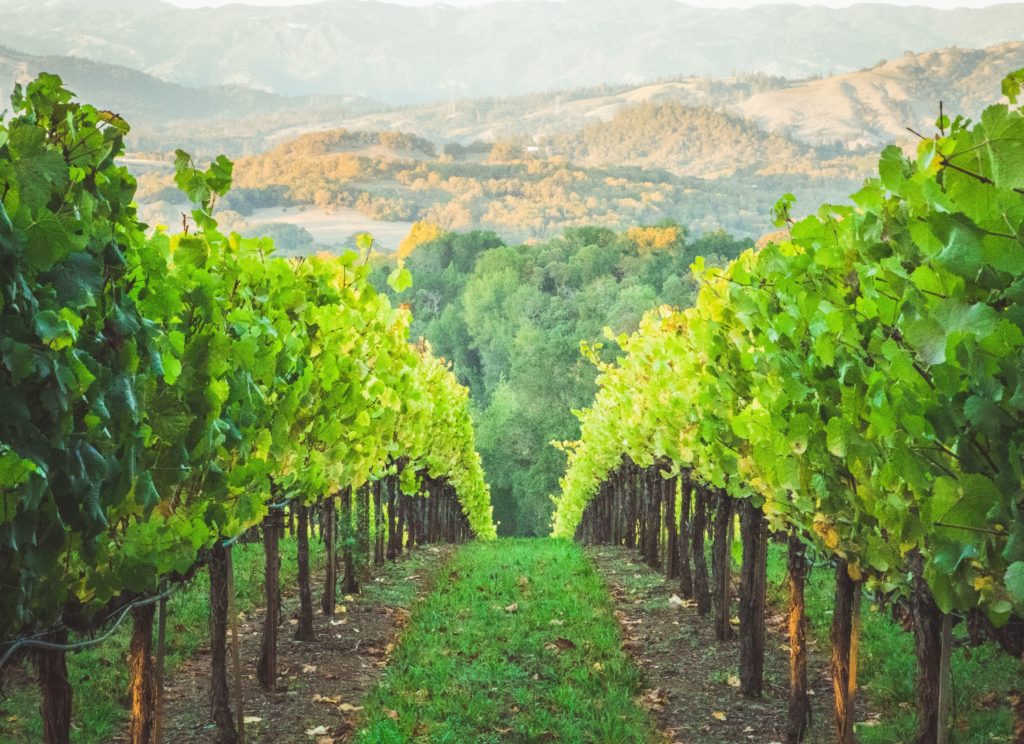
What Makes Wine Fruity?
Wine will be more or less fruity based on the grapes used during production. All wine is made from grapes, but there are tons of different kinds that all have their own flavor profiles.
The names of your favorite wines like Brunello di Montalcino, Cabernet Franc, and Cabernet Sauvignon are taken from the names of the grapes used to create the wine, often inspired by the region or vineyard where those grapes are grown. For example, the brunello strain of Sangiovese grapes can only be used to create the Tuscan red Brunello di Montalcino. The flavor profile of the wine reflects the flavor profile of the grape variety used during the winemaking process.
Some wines are a blend of two or more varieties of grape, while “varietals” are made from a single grape variety. Grapes actually take on the flavors of other fruits depending on how and where they are grown. When wine goes through the fermentation process, even more flavors are released into the wine.
What Are Tannins In Wine?
Tannins are an element in wine that typically only wine experts really understand—but we’re going to try to change that. There’s actually a simple way to tell if the wine you’re drinking has a lot of tannins or not: it’ll taste astringent (kind of bitter) and will leave the inside of your mouth feeling a little sticky.
Tannins are found in things that are in nature, which include plants, bark, leaves, and grapes to make themselves unpalatable to any of their natural predators. But we promise that they’re not going to make your wine taste bad. When tannins are managed or controlled in our food and drink, they will make the food taste even better than it would without them—think coffee, wine, and chocolate.
When determining certain flavor notes or if the wine is dry or sweet, tannins really aren’t that important. However, they’re crucial in explaining the flavor profile of your wine (and your ability to impress people with your knowledge). You talk about tannins when discussing finer notes of certain types of wine—think words like “polished,” “rough,” “smooth,” and “elegant,” depending on the way it feels in your mouth. It can take some time to figure out the right words to describe these feelings, but you’ll get there!
Get Wine Delivered With Saucey
We think it’s safe to say that you are a wine expert by now. We have covered pretty much everything you need to know about wine, such as the different types, wine regions around the world, and how to taste and describe wine.
Even so, there is still a lot more you can learn about each topic if you are interested. For many people, wine is more than a hobby or something they enjoy drinking with dinner; it’s a passion. Wine connoisseurs are experts in all things wine and can describe the taste and smell of wine perfectly. Plus, they know exactly what wines go with what foods, which makes everything way more fun.
The best way to familiarize yourself with wine is to try as many different kinds as you possibly can. Eventually, you will start to pick up on the main similarities and differences between each bottle of wine. You will start to figure out what your favorites are, too. If you want to start trying different kinds, the best way to do that is by ordering your wine through Saucey.
Head to our website and browse all of the different wine selections we have available. We have hundreds of brands, varieties, and types of wines to choose from. Whether you have a favorite or are looking for a new one, we’ve got you covered. Add all of your selections to your cart and then head to the checkout. Time for the best part: we deliver! After you checkout, you won’t have to wait long until your wine delivery arrives right at your door.


